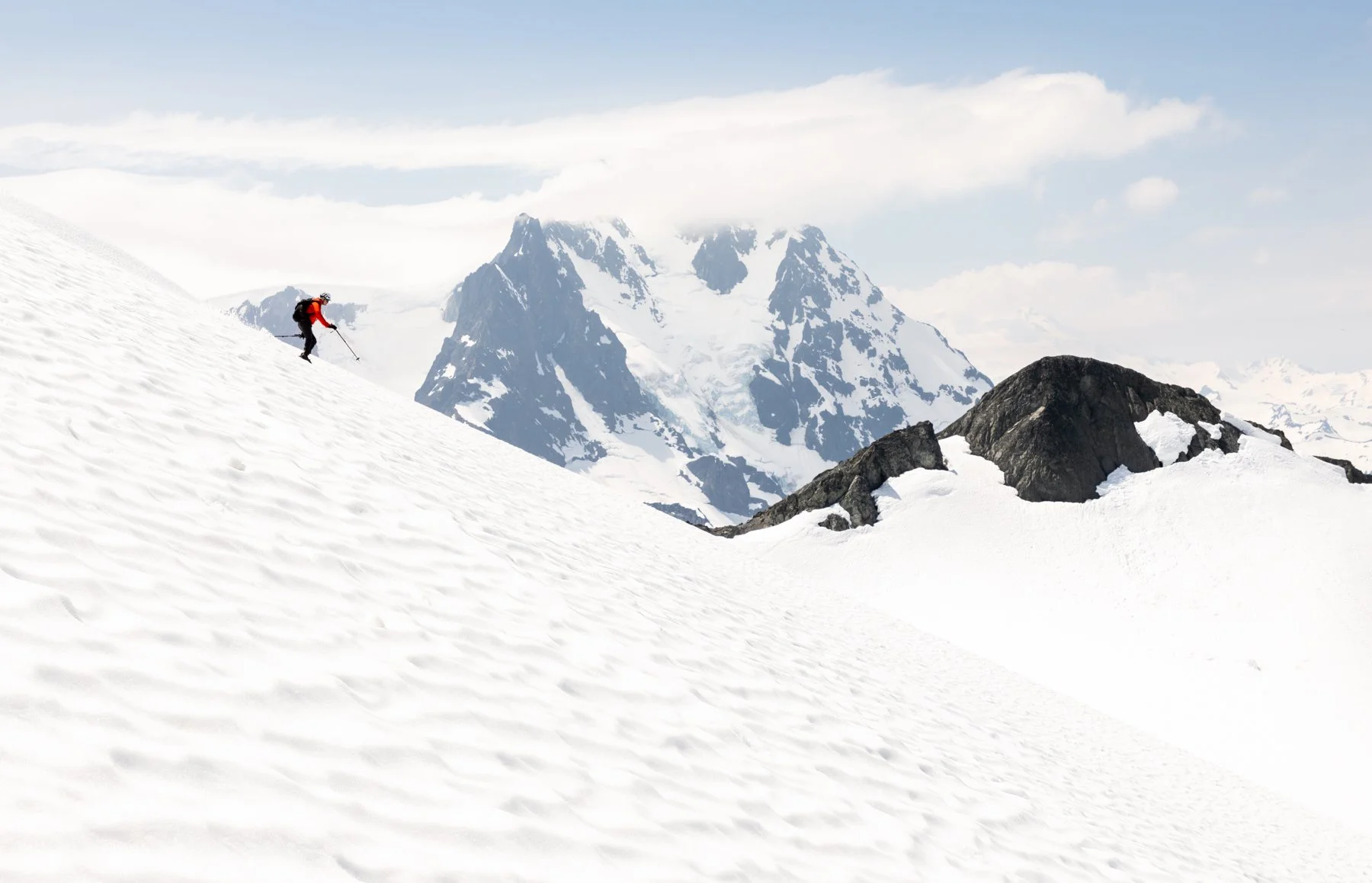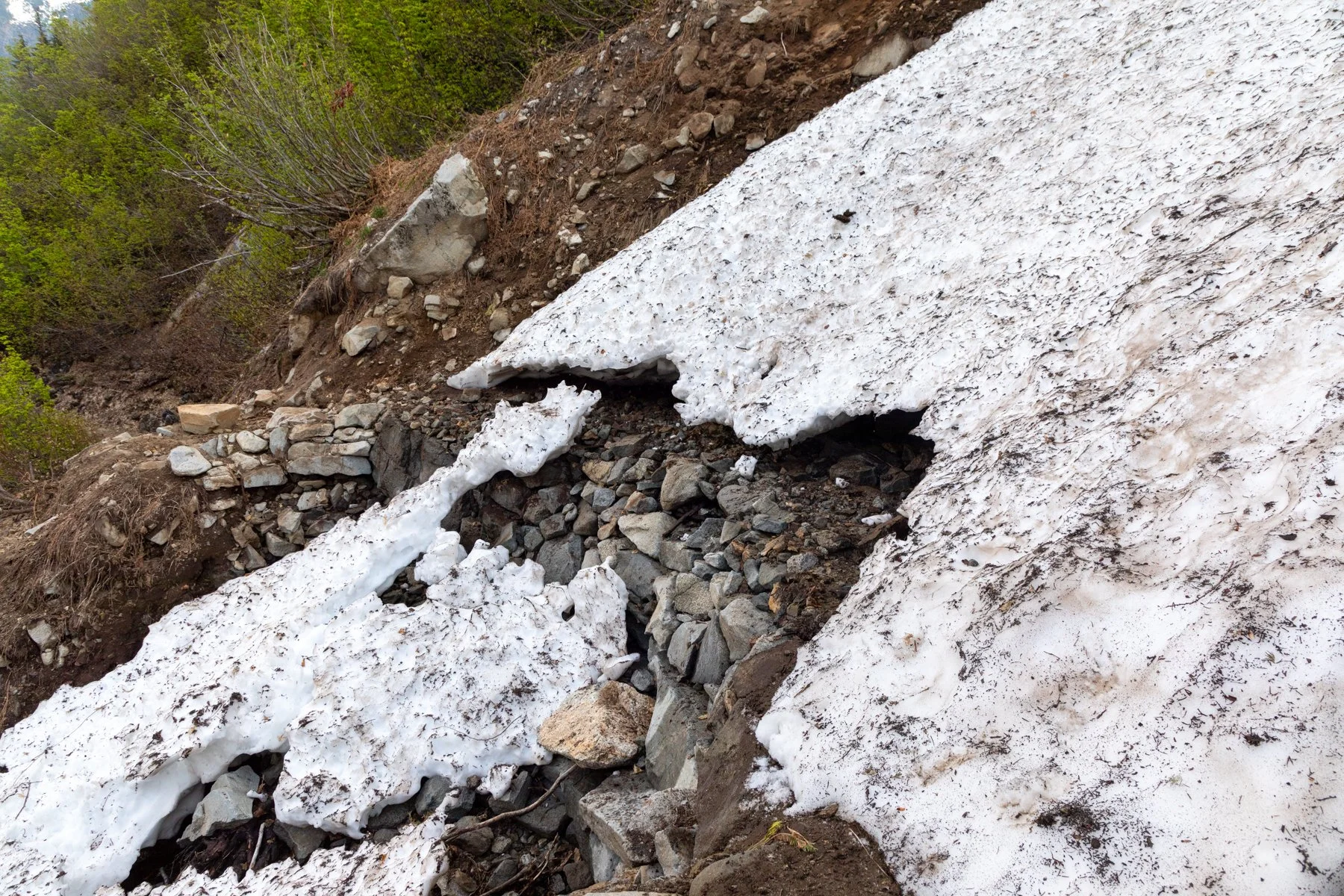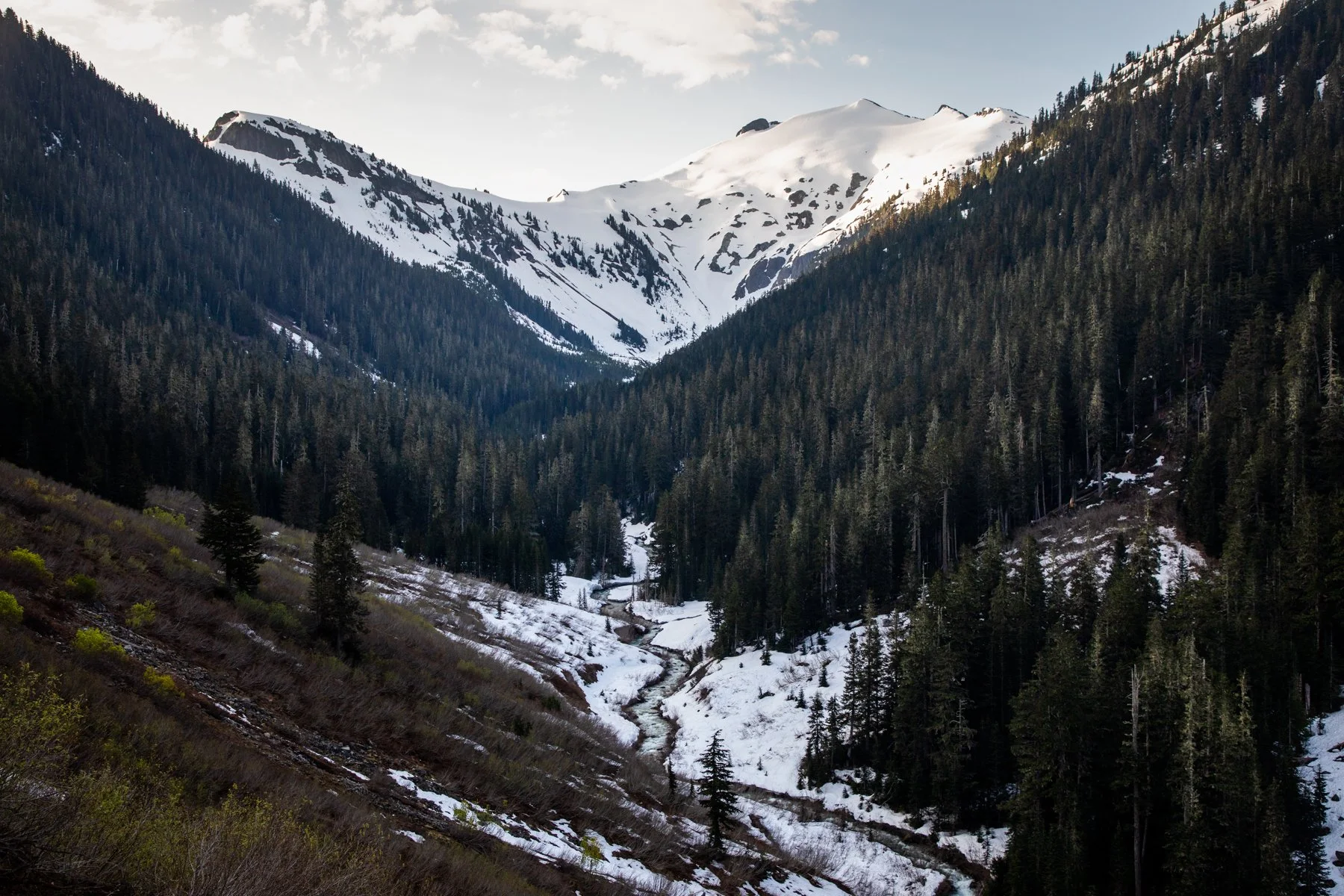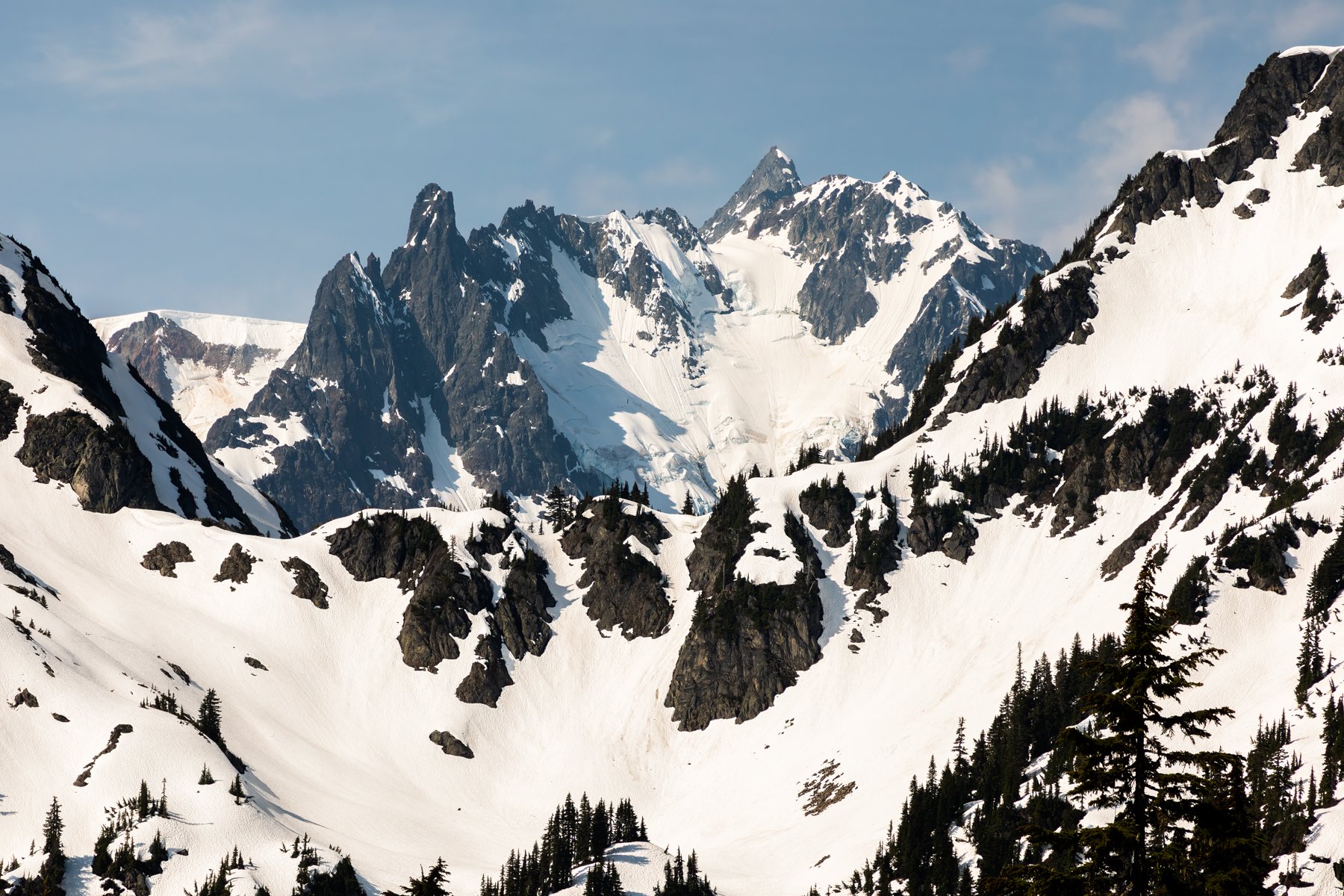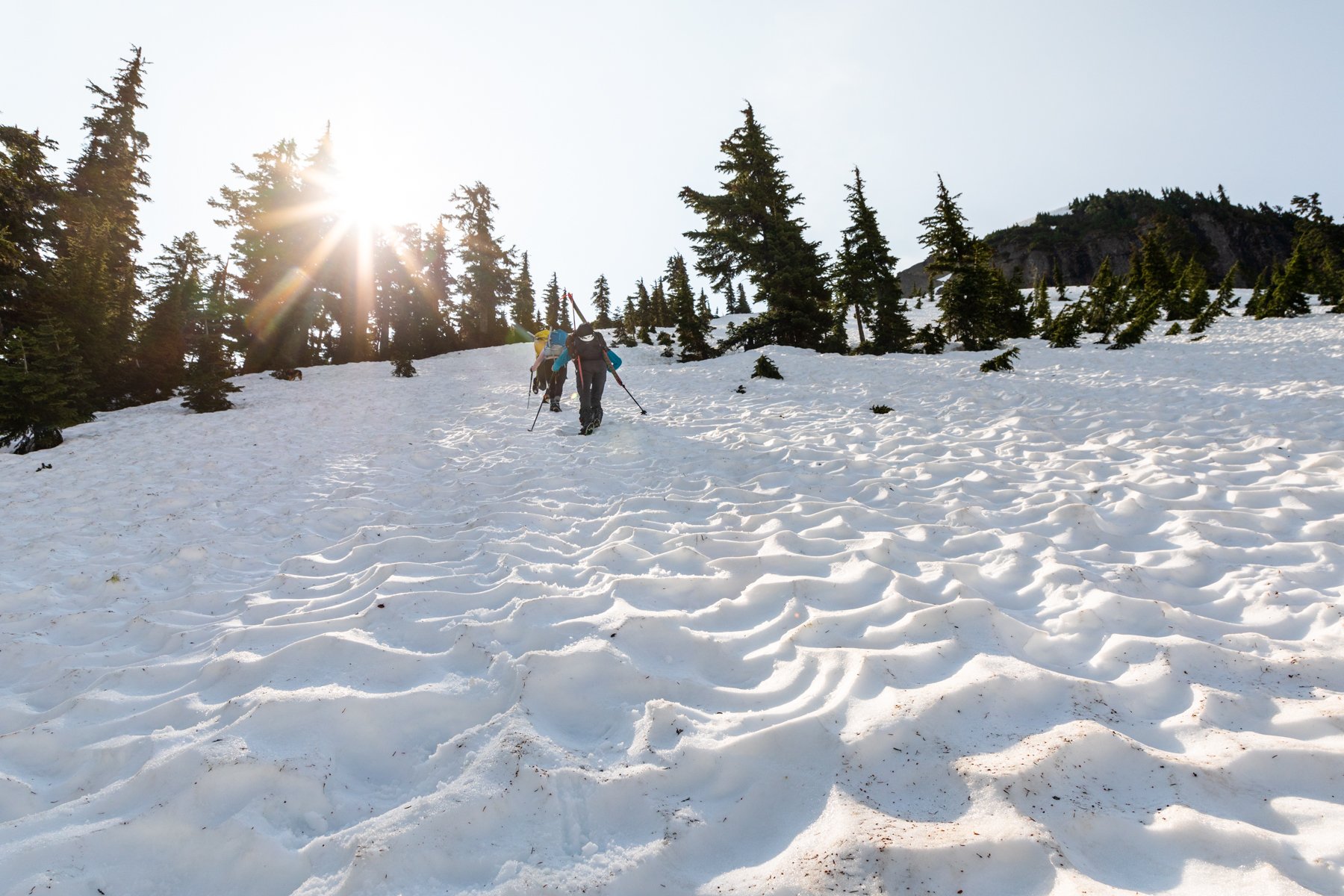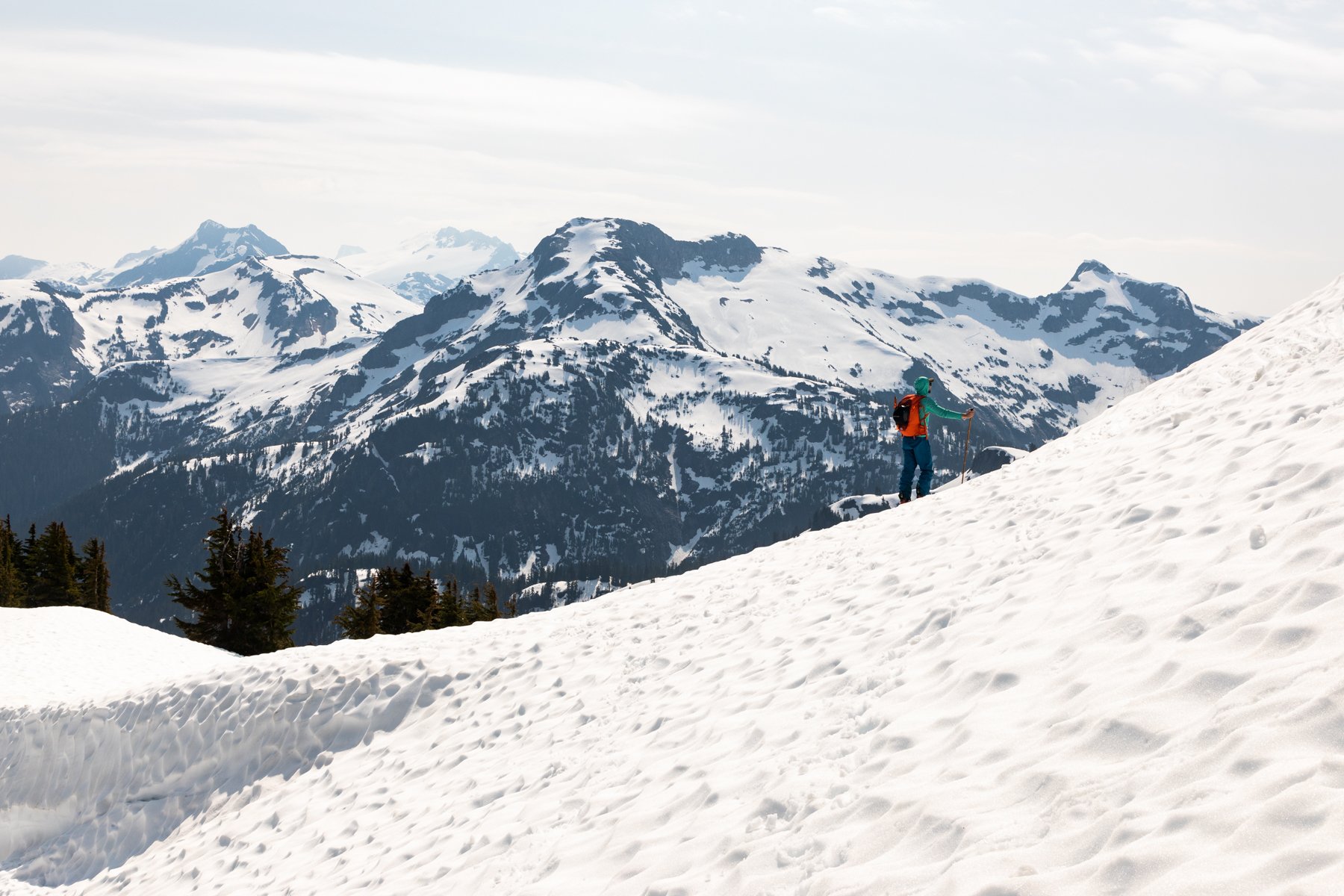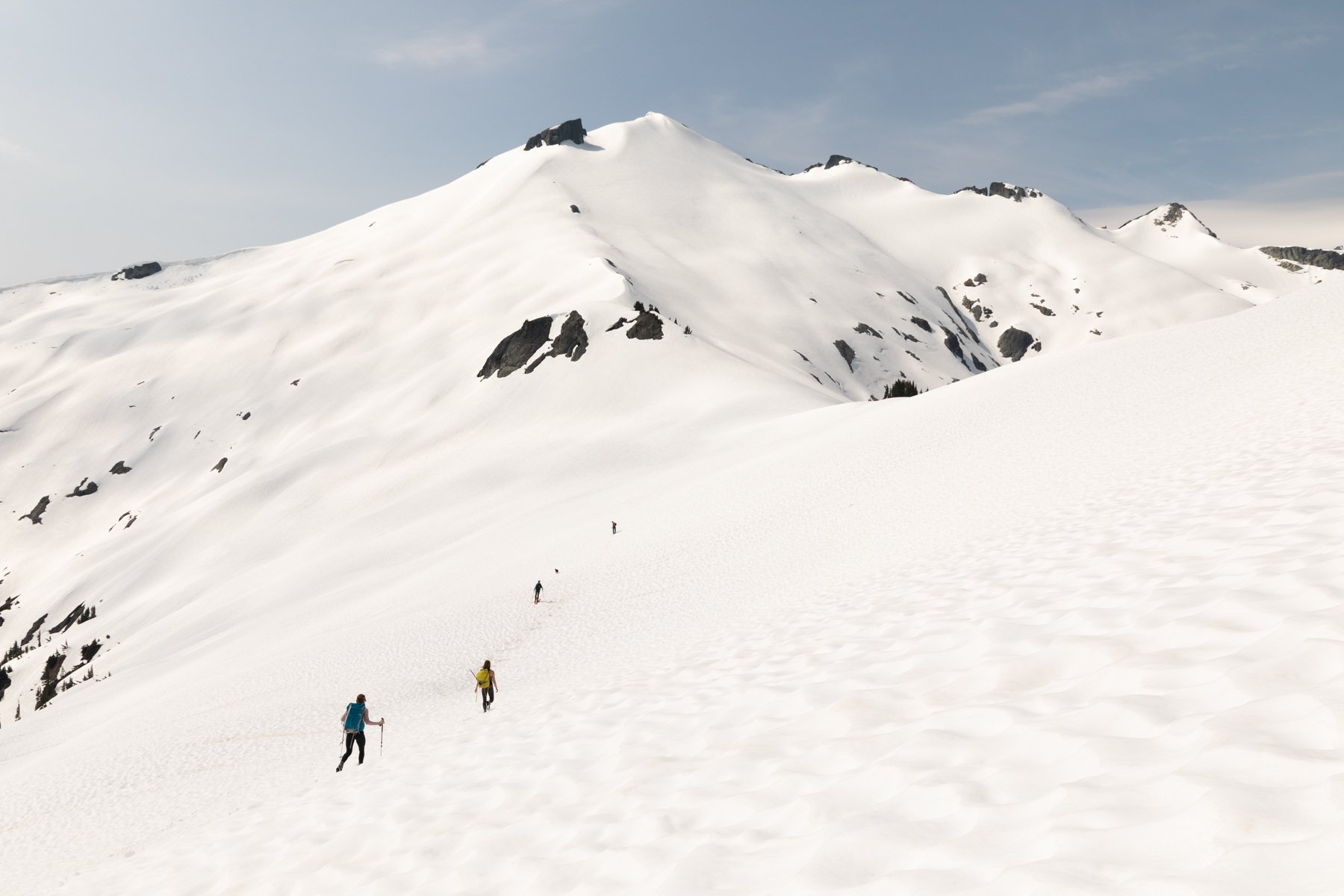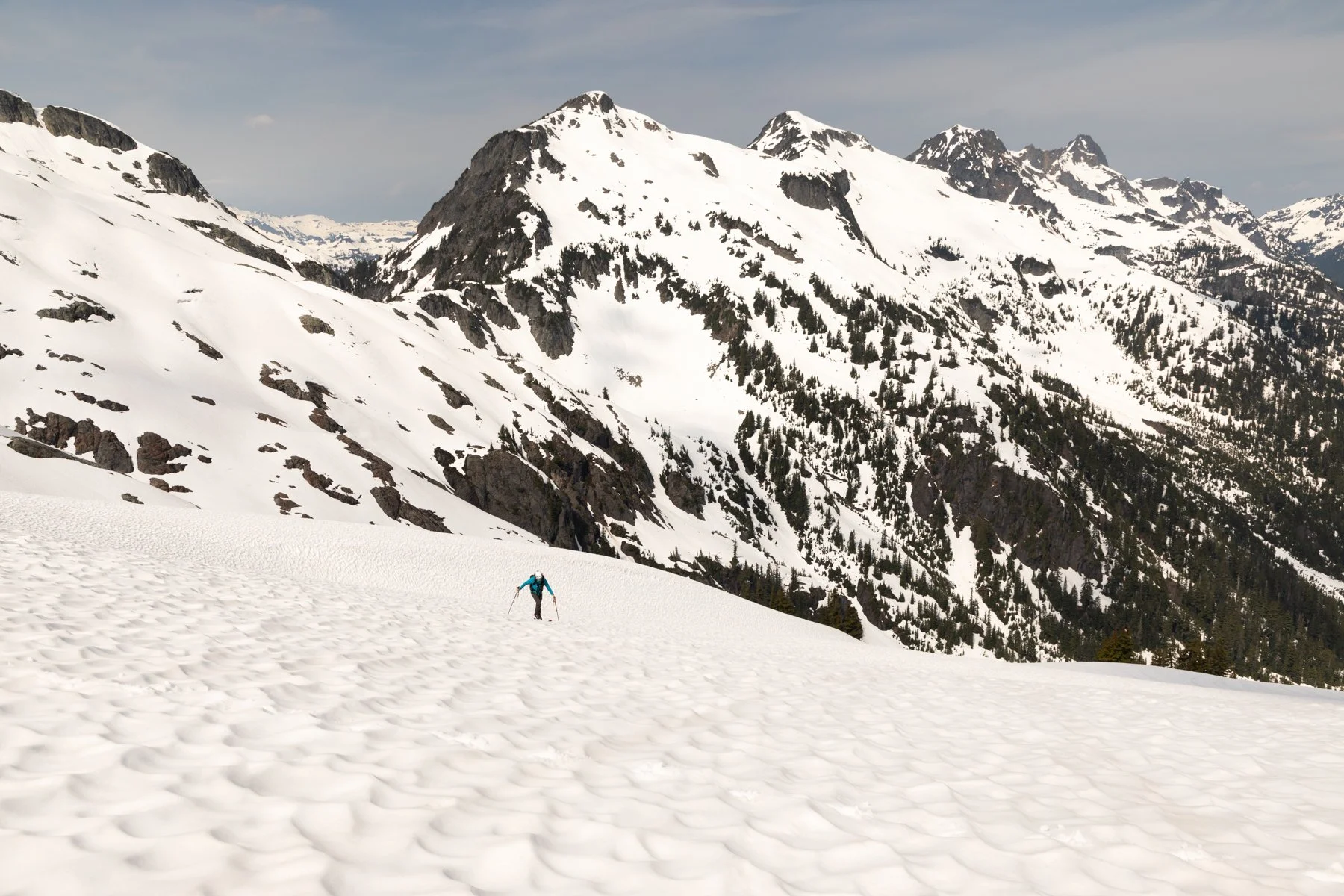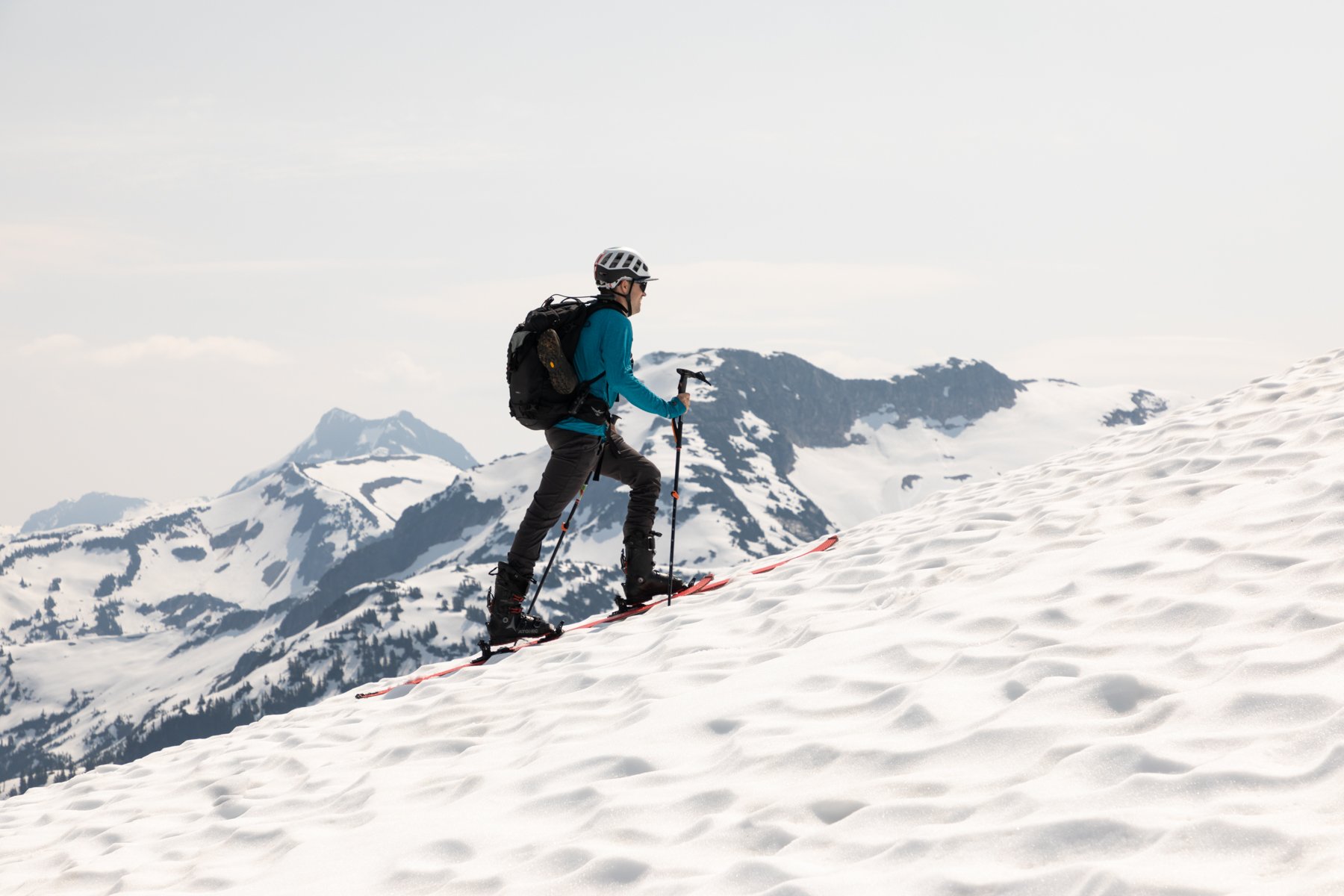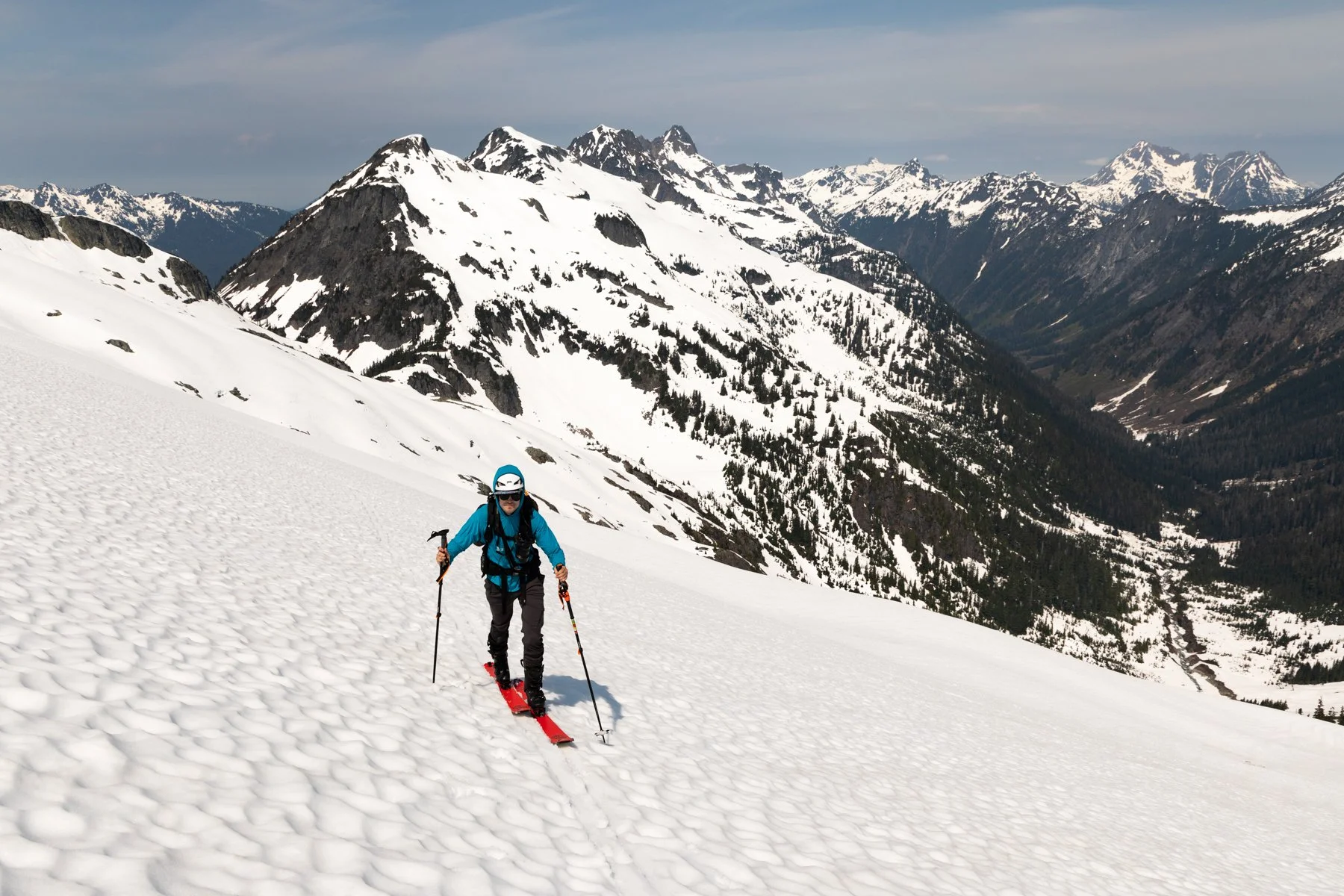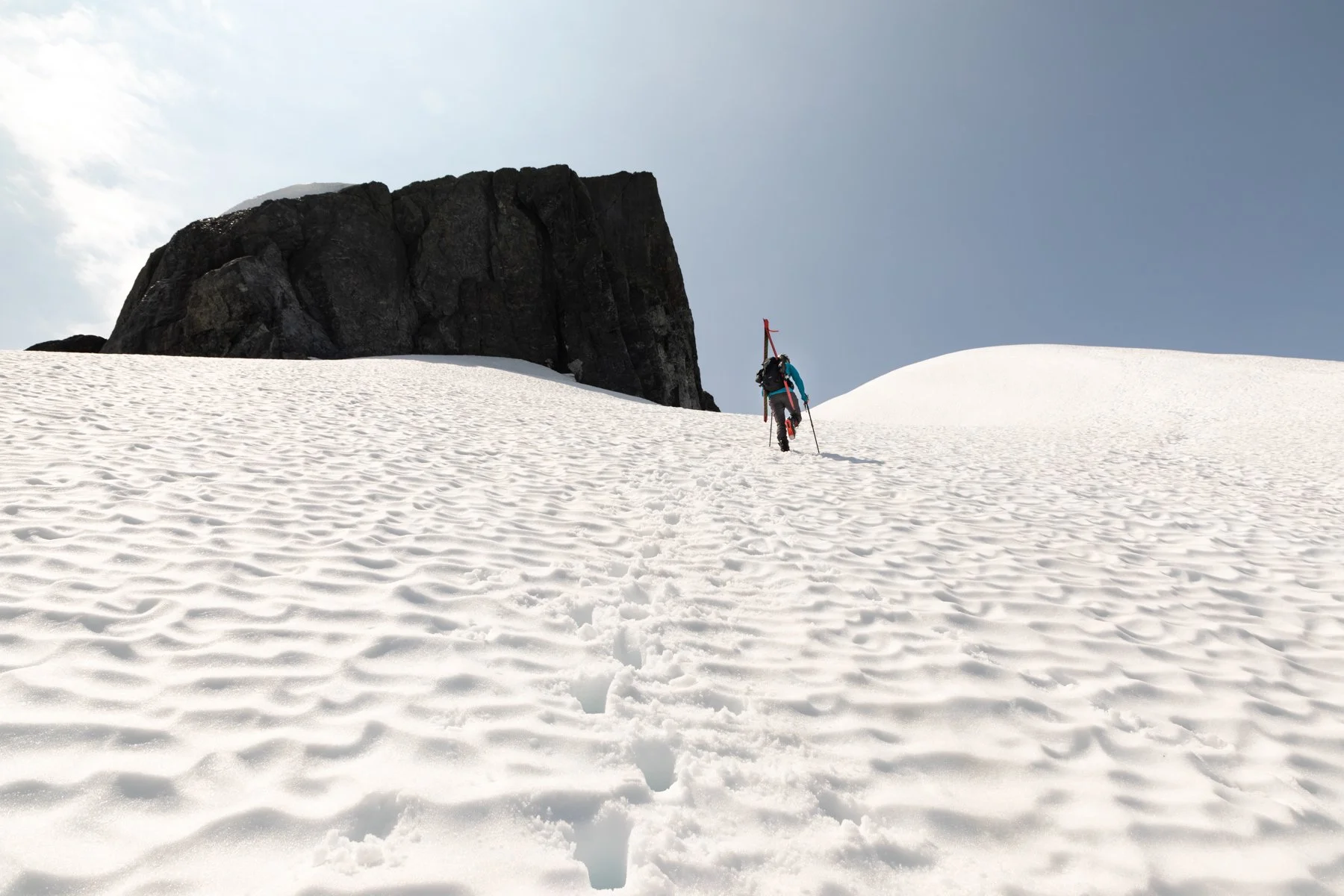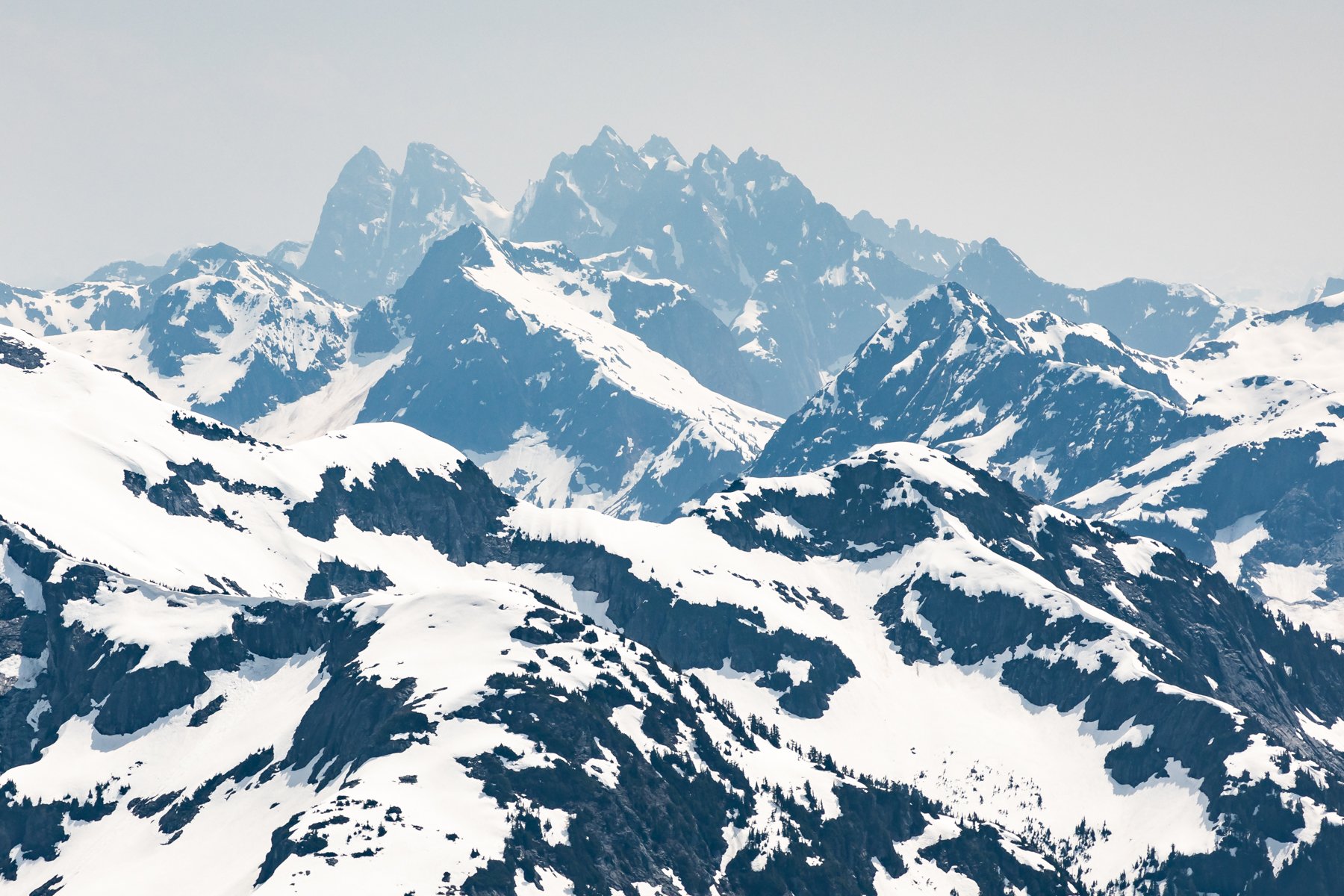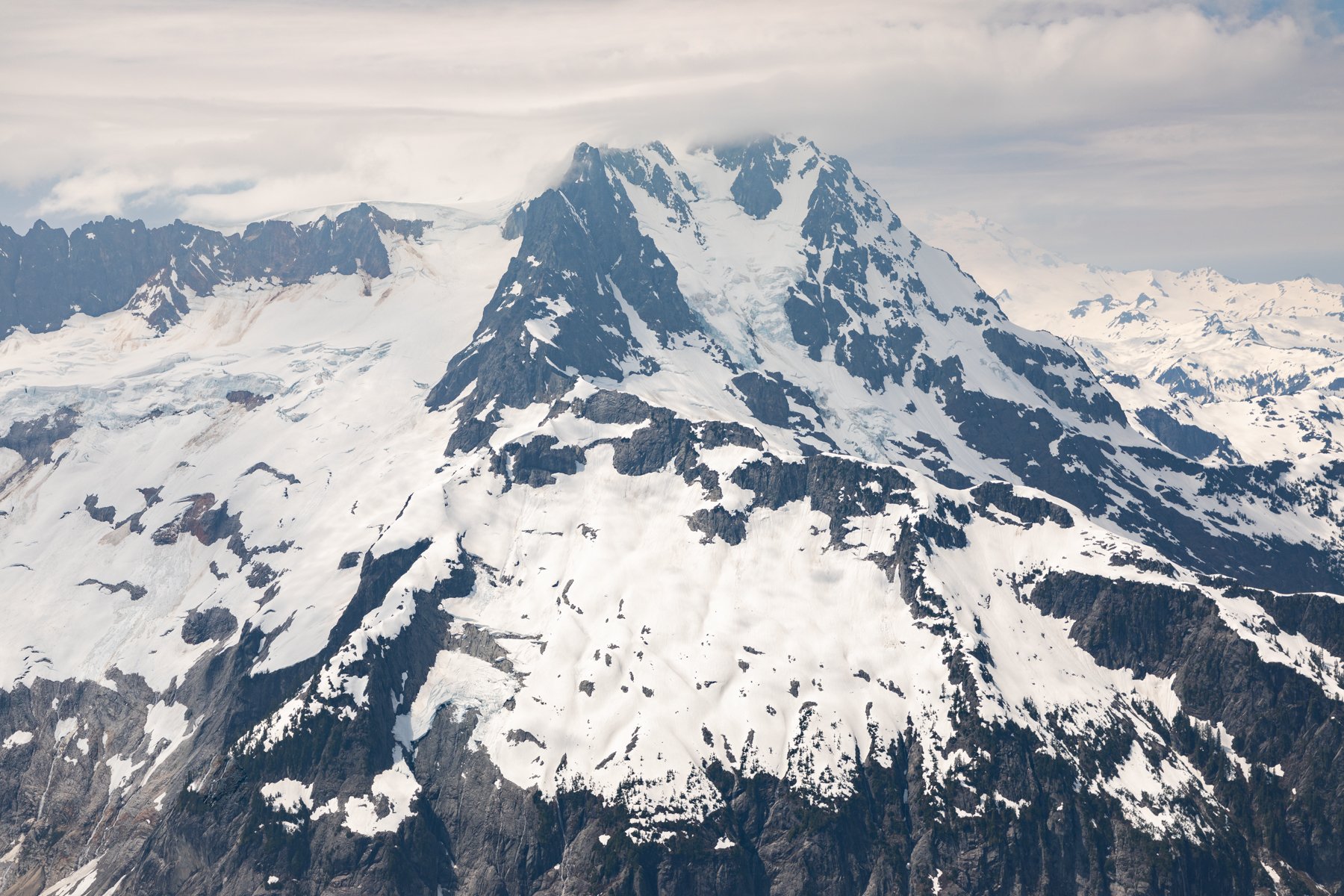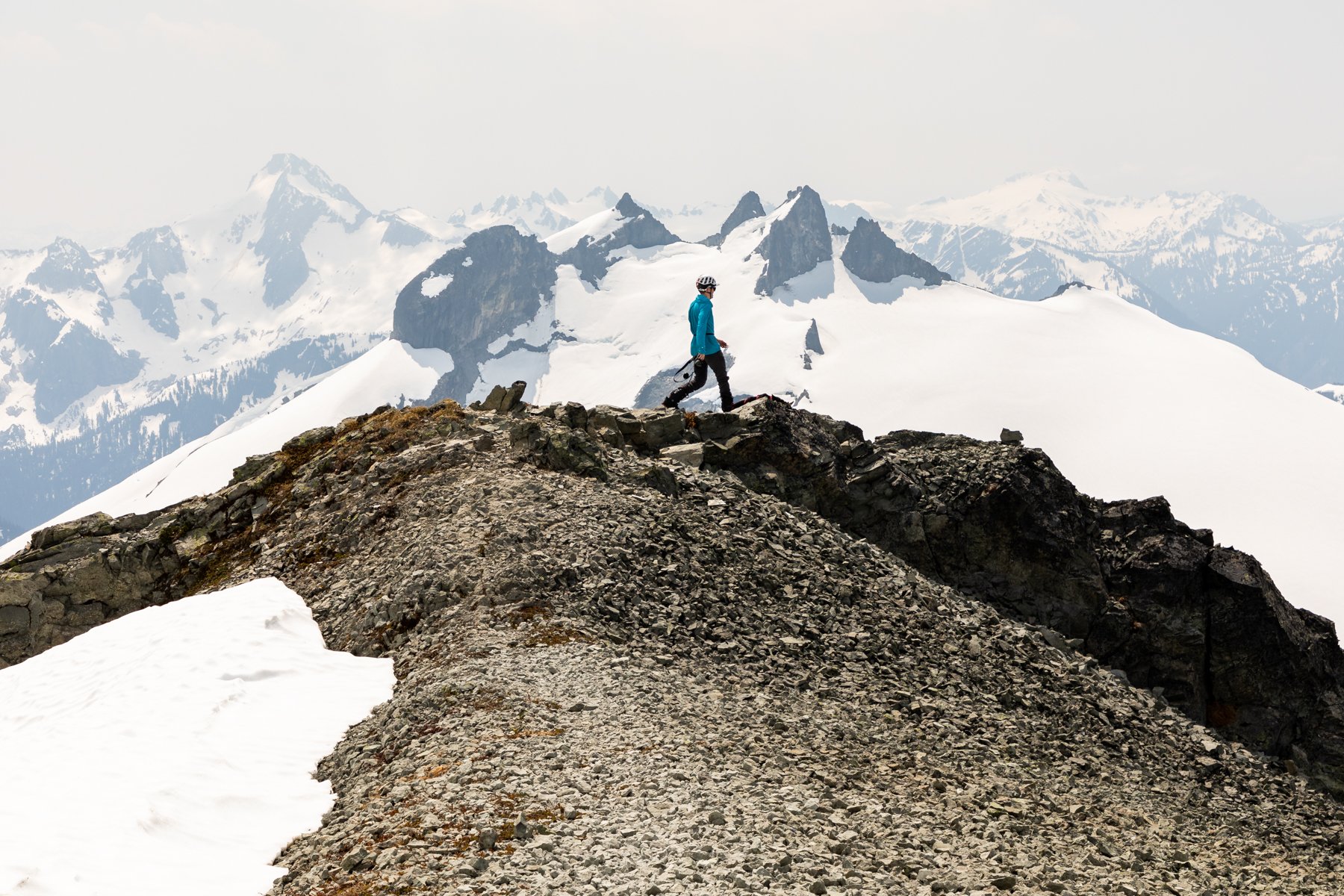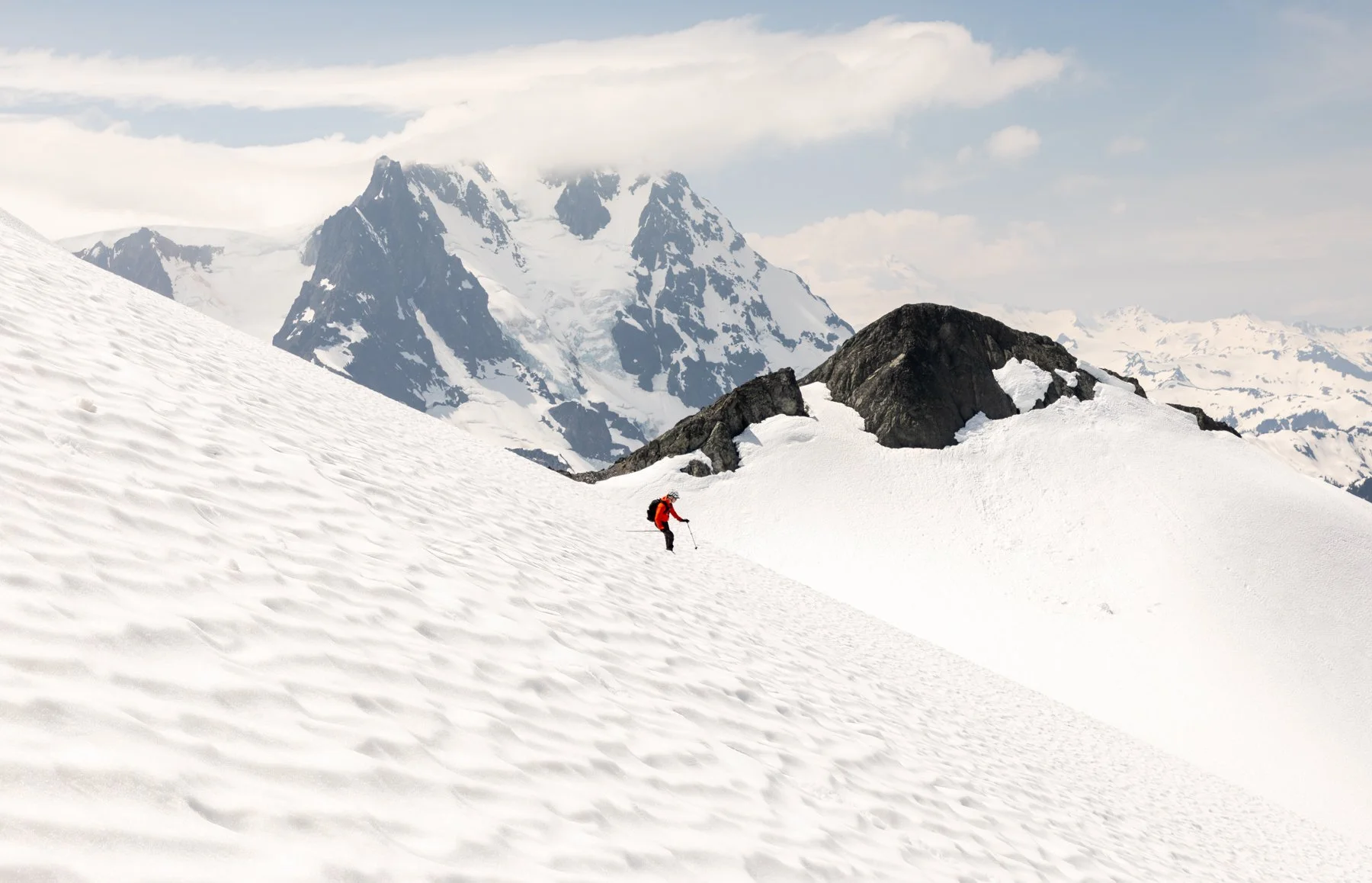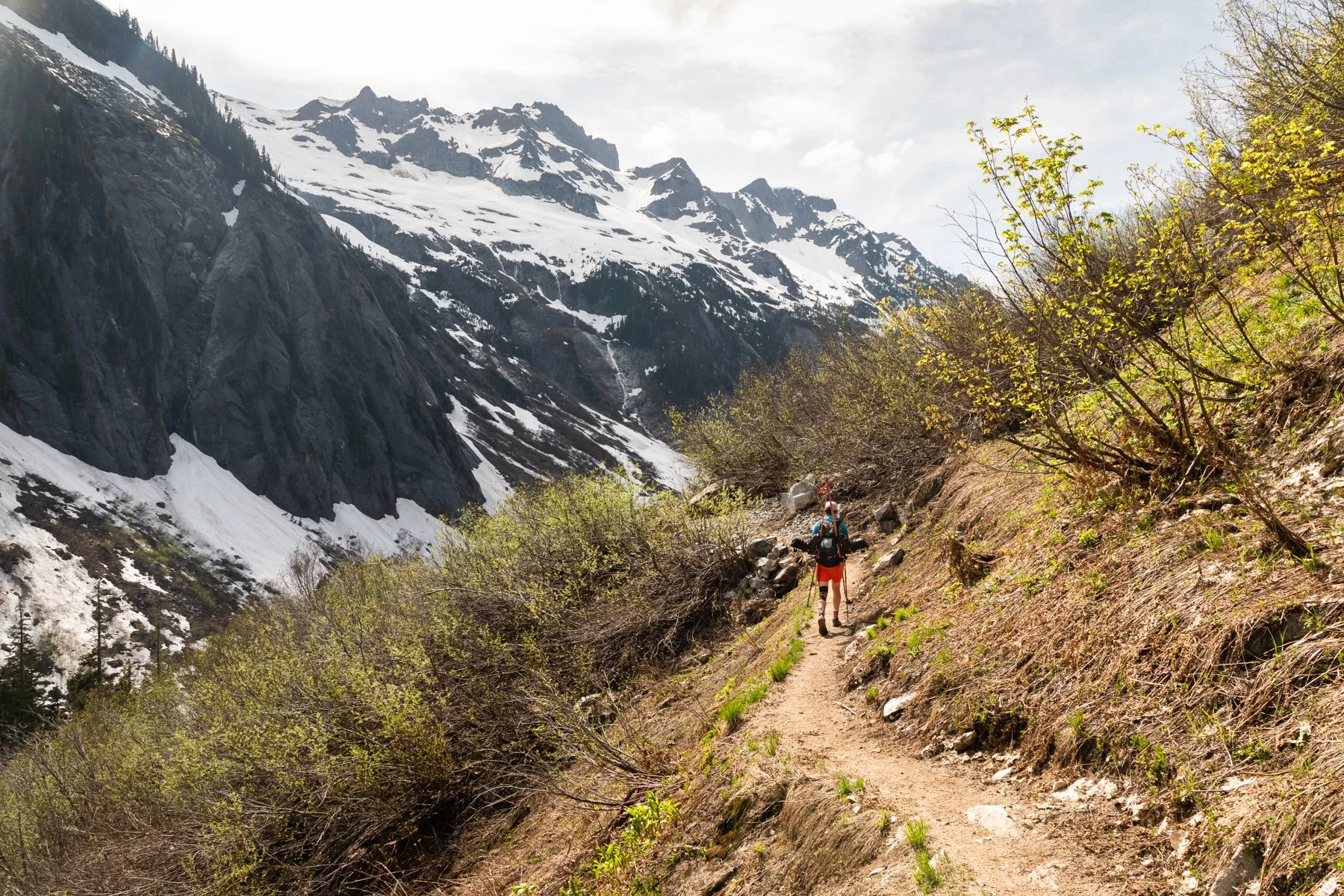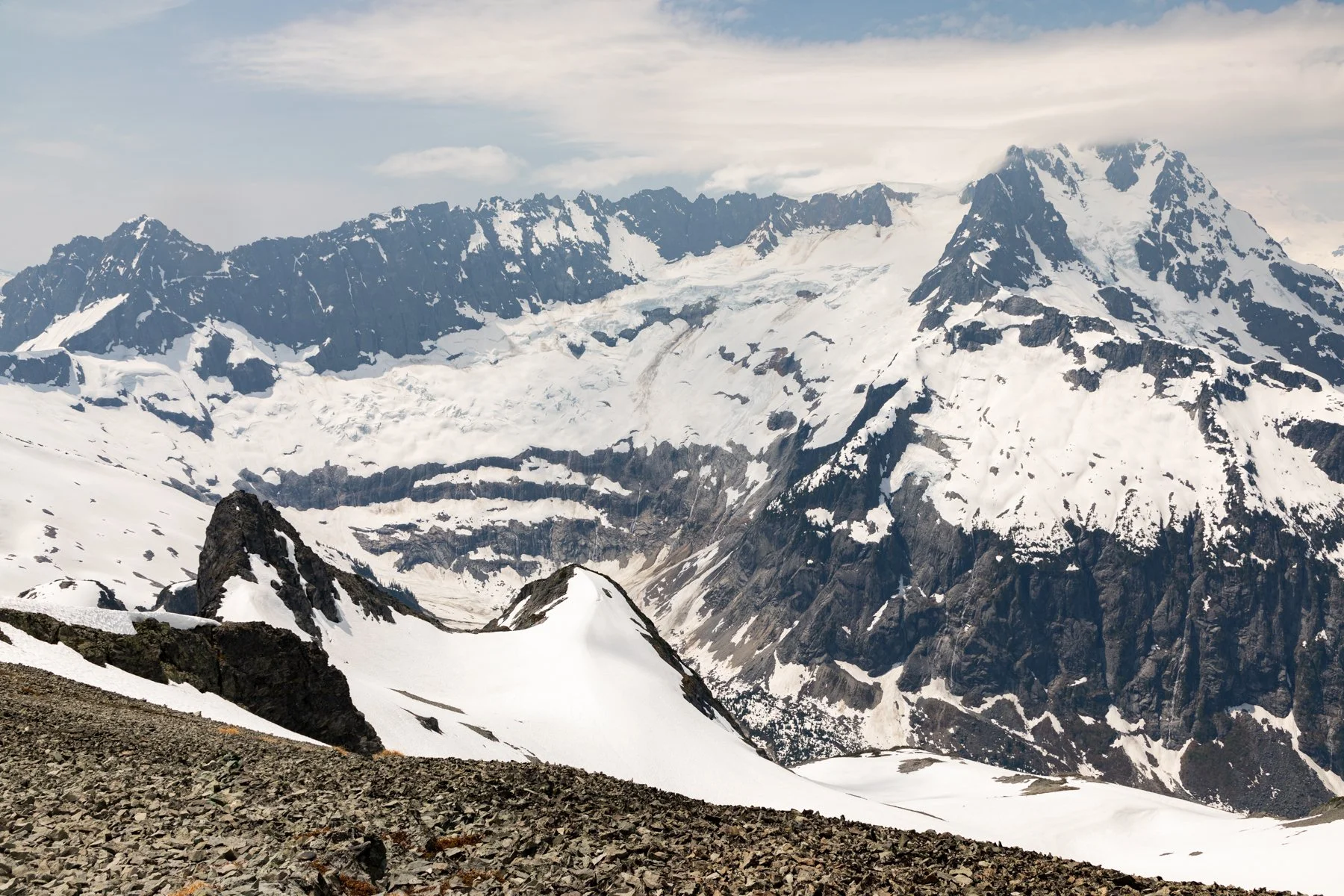Skiing Ruth Mountain 2.0
DATE HIKED:5/20/23
TOTAL MILEAGE: 12 MILES
TOTAL ELEVATION GAIN: 4,800’
This past weekend I finally got to properly ski a mountain that I have been dreaming of skiing for over two years. Ruth Mountain. If you’ve been around here for awhile you’ll know that technically I already have skied Ruth Mountain in May 2021, but unfortunately, it was in a whiteout so it was more survival skiing than anything. Since that trip I have been dreaming of returning in better conditions, but I’ve also been a little apprehensive since our first trip to the mountain really pushed Alex and I out of our comfort zones and pushed our limits physically.
In order to make sure a return ski trip to the area didn’t end in similar disappointment, I planned accordingly. First, we made a mistake of attempting it as an overnight trip. The conditions were subpar and in addition to dealing with that, we also had to do it all while carrying heavy overnight packs. The second mistake we made was going at the wrong time. In the winter and early spring, the valley holds enough snow that skiers can avoid the high summer trail and take the valley all the way to the base of the mountain. In late spring, the higher summer trail melts out and skiers can carry their skis on their back until about Hannegan Camp. But in between those two extremes there isn’t quite enough snow to warrant skinning through the valley, but the summer trail also hasn’t completely melted yet, leaving obstacles like huge avalanche debris piles, dangerous snow bridges, and rushing streams. In 2021, this is the time of season we went. Alex and I toiled with conditions on the summer trail, constantly route-finding around and over debris piles. It was a recipe for failure!
We had intended to camp on the summit that trip but, due to conditions of the trail, we were slowed down and only made it to the Ruth Arm to set up camp. While we had clear skies on our hike in, when we finally summited the next morning, it was in a whiteout.
So this time I tried to plan smarter. I used Caltopo’s satellite imagery to see how much the trail had melted. And I decided to not repeat an overnight trip and instead do the whole thing in a long day.
Alex took the weekend off from skiing again, but my friend Andrew was game to give this one a go, so he and I met at the Hannegan Pass trailhead on Friday night at around 9PM.
We started hiking at 5:30AM with our skis and boots on our back, trailrunners on our feet. Judging by the satellite images and some recent trip reports it looked like most of the trail to Hannegan Camp would be snow-free. I still had a lump in my stomach as we started out, nervous that this would be a repeat of the May 2021 trip.
As we made our way along the trail it was very, very apparent that this would not be a repeat trip. The trail was indeed melted out. We encountered only four or five debris piles/snow bridges and they were easily navigable. We did stop to put crampons on for three of those piles (yes, on our trailrunners!), because the snow still felt a little firm in the shadows and there was a long runout in the event of a fall.
We encountered continuous snow right around Hannegan Camp. We switched to ski boots and booted the remainder of the way to Hannegan Pass where we took our first and only prolonged break. It took us 3.5 hours to reach the pass (I had been aiming for 3 hours), but it was better than the 5.5 hours it took Alex and I in 2021!
After our break we made our way up to the steep bootpack under Point 5930. Here we met a group of three climbers that Andrew knew! We joined up with them as we made our way up and around the point. It’s always so great to meet other people on the trail. Talking with them is a morale boost and a distraction as you discuss the current hike, past hikes, and dream hikes.
Once we were around Point 5930, we switched to skinning for the first time since we left the trailhead—we were over four miles into the ski tour but we finally were on skis. The snow was softening up in the sun which made for some slick skin tracks, but we were enjoying the lightened load on our backs. We cruised past the little stand of trees that Alex and I had camped at that first trip in a fraction of the time. It was hard to believe that just two years prior (nearly to the day), Alex and I stumbled into this camp, exhausted and drained. On this trip I felt strong and energized.
We continued to skin even as the face of Ruth steepened. As we gained elevation, the views continued to open up. We had a great view of Challenger and Whatcom and the Chilliwack range to the north. And, once we got high enough, Shuksan peeked out, jagged and rugged and beautiful.
A few hundred feet below the summit Andrew and I switched back to booting. We had been making long, sweeping switchbacks and, by that point, it seemed like it would be more efficient to just head straight up the mountain. This could probably be argued, as the sun had softened the snow so much that kicking firm steps was a struggle, but we persisted.
After just over six hours of hiking/booting/skinning, we were standing on the summit of Ruth Mountain taking in the sprawling 360-degree views. This view remains one of my favorite views in Washington (while we didn’t get to see it in May 2021, we did get to see it in July 2021!). The views to the southeast of Icy Peak, Bacon, Blum and the Pickets are unparalleled. Every direction is filled with mountain peaks.
We took another extended break on the summit. Snacking, taking photos, and just soaking in the beauty.
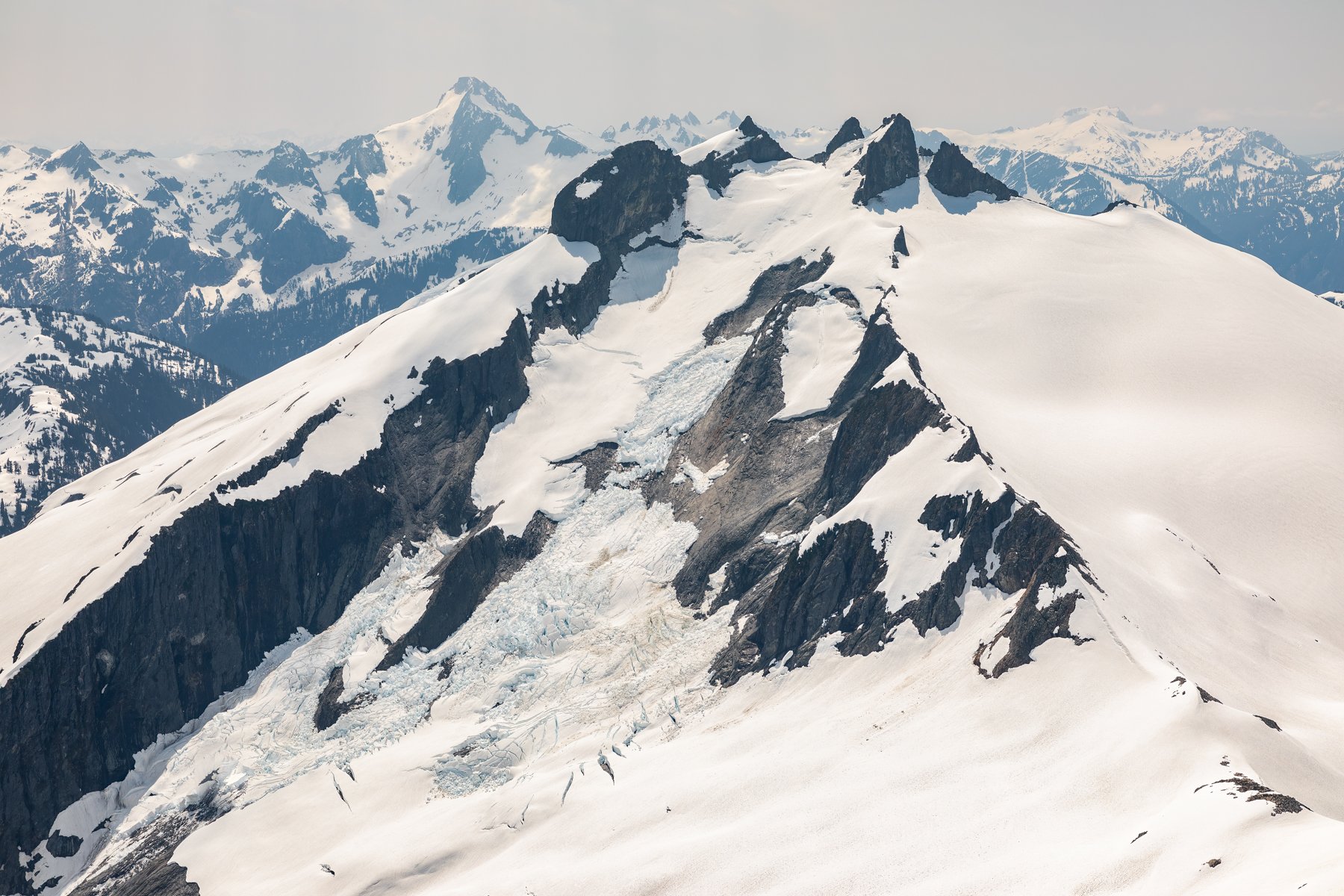
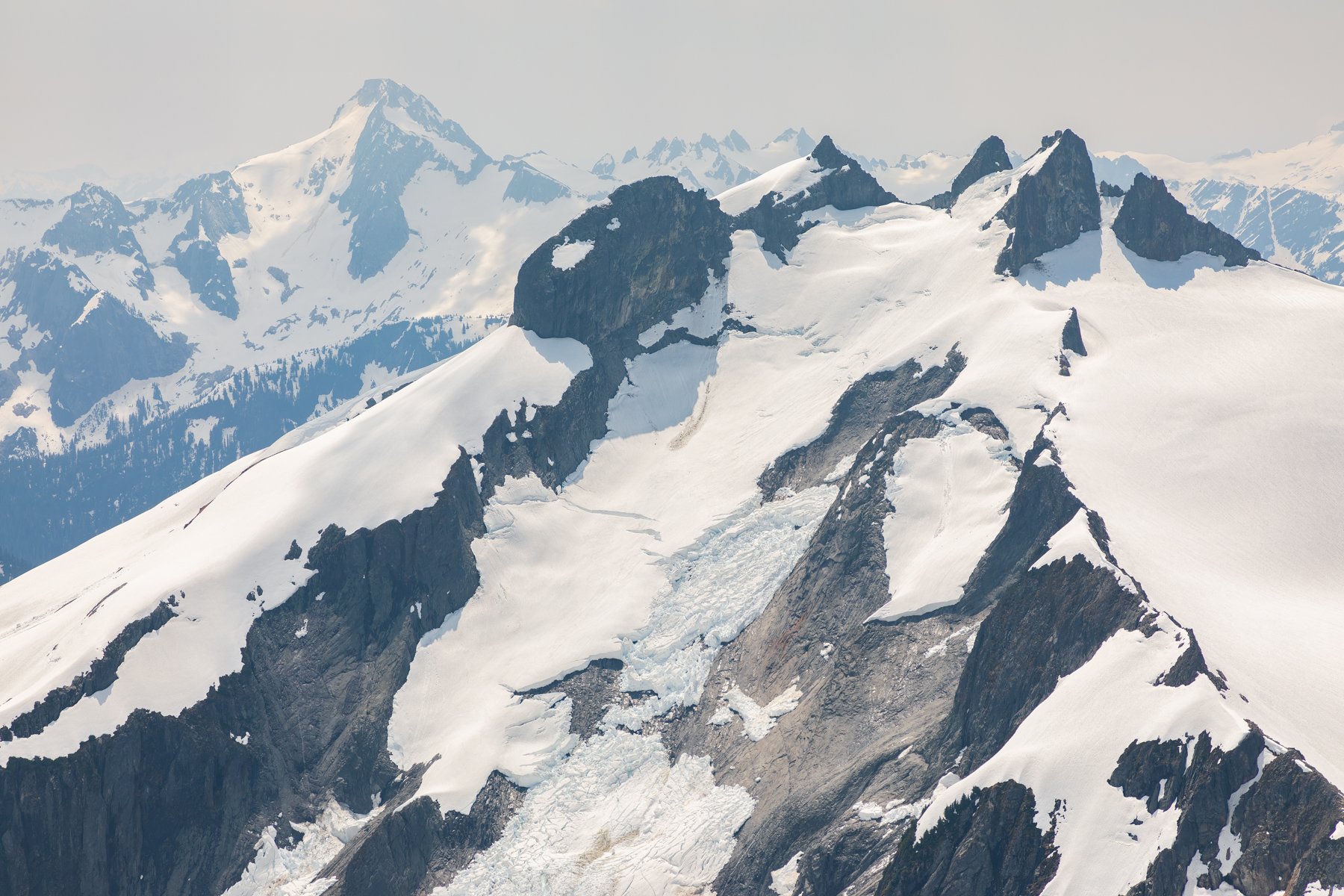
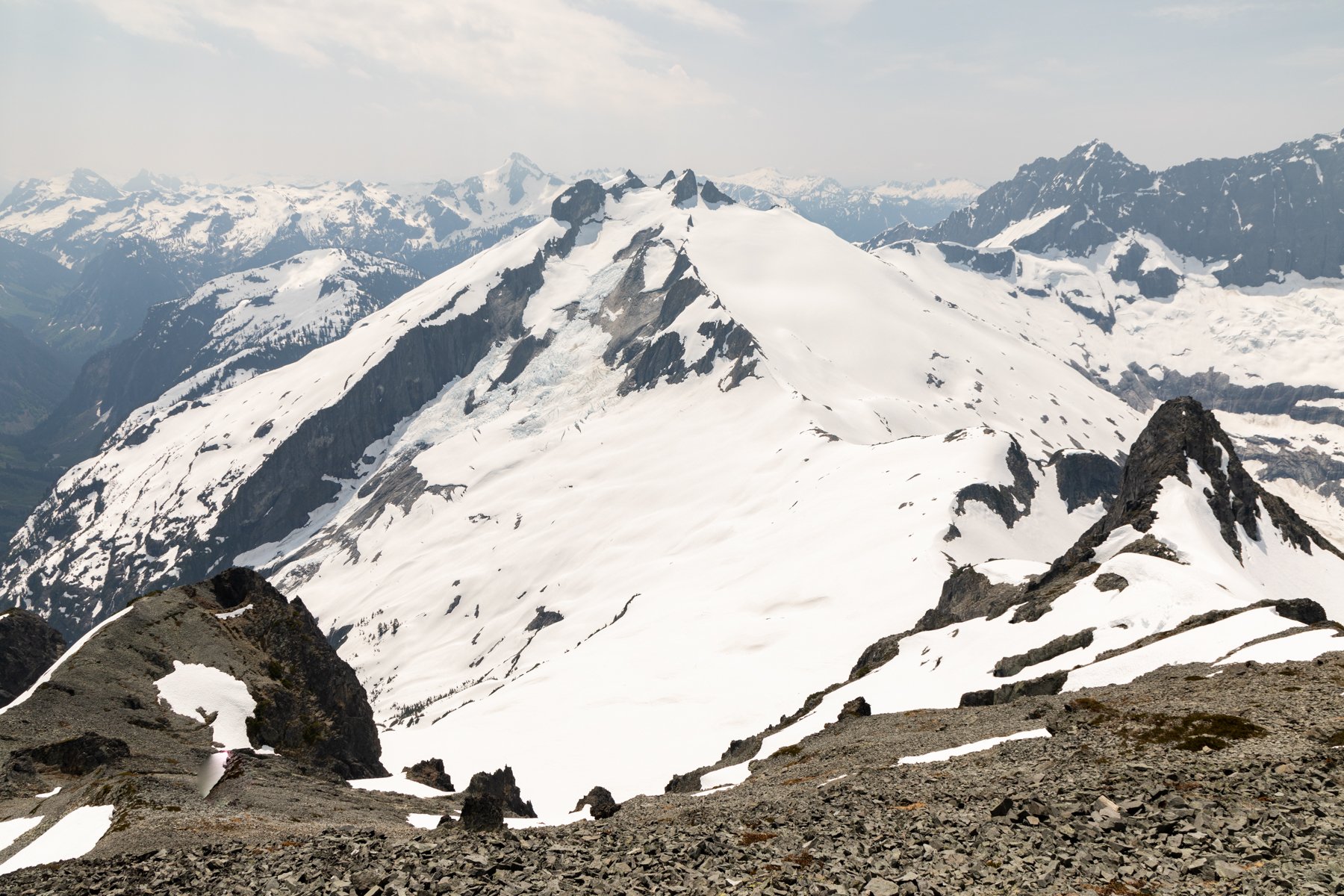
Finally, it was time for the moment I had been waiting for for two years. The ski descent! One would think that looking forward to something for so long, and hyping it up so much would lead to an anti-climactic experience, but that was not the case. The ski down was one of the best backcountry ski runs of my life! It was pure type 1 fun. The snow was superb corn, the views were unmatched, and the skiing was just so fun. We were able to ski a line all the way into the valley. It was close to 3,000’ of joy.
Once we were in the valley we transitioned back to skinning and began to make our way into the forest and toward the trail. Since we skied all the way to the valley instead of retracing our approach, we ended up a few hundred feet below the summer trail, and between us and the trail was a forest full of thick slide alder. We knew the trade we were making when we opted to ski into the valley, but the allure of skiing from the summit into the valley was just too enticing so we battled the slide alder for a good 20 minutes until we finally regained the trail. It was worth it!
From there it was smooth sailing back to the trailhead. The debris piles we donned crampons for in the early morning were now soft enough to stroll across.
We made it back to the trailhead just over 11 hours after we departed. It ended up taking longer than I expected, but we did take a couple extended breaks.
All in all, this trip was everything I had hoped it would be and more. It was challenging, it was beautiful, it was fulfilling, it was fun. Now I’m of the opinion that this should be an annual tradition—just as long as the timing is right!
*****
Strava activity: https://www.strava.com/activities/9109916732

